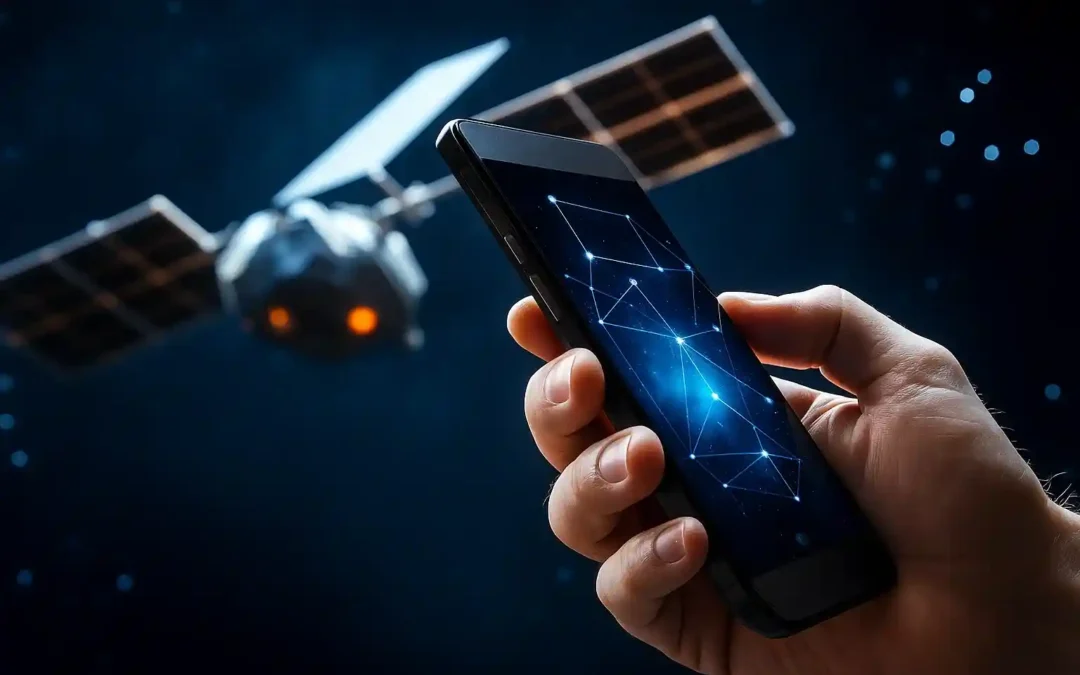Satellite connectivity is changing the way smartphones work. There will be no more network dead zones and no need for special devices. Even regular phones like the iPhone or upcoming models in Bangladesh will soon have much wider coverage. Recent developments include T-Mobile’s T-Satellite service, Ukraine’s Starlink direct-to-cell tests, and AST SpaceMobile’s network expansion. This technology is also combined with multimodal AI in modern smartphones like the iPhone 17 Air, creating new real-world applications and offering practical benefits for users.
Now, you can make calls, send messages, or use apps anywhere, even in the most remote areas. No more dropped signals or waiting for Wi-Fi; your phone will always keep you connected.
Table of Contents
Why Does Satellite Connectivity Matter Now?
T-Mobile’s T-Satellite Rollout
T-Mobile’s T-Satellite, powered by Starlink, officially launched on July 23, 2025. It now supports MMS, including images and GIFs, for Samsung and Motorola users. Sending an image currently takes around 2 minutes, while short video clips take 10 to 20 minutes. Full data access is planned to launch on October 1, 2025.
Ukraine’s Breakthrough in Eastern Europe
On August 12, 2025, Ukraine’s Kyivstar successfully tested Starlink’s direct-to-cell technology. This was the first time such a test was done in Eastern Europe. Messages were sent using regular smartphones. Full messaging services are expected by late 2025, and mobile broadband through satellite will be available in early 2026.
AST SpaceMobile’s Global Expansion Plans
AST SpaceMobile announced that it now has enough funding to launch 45 to 60 satellites by 2026. The goal is to provide space-based mobile broadband to the United States, Europe, and Japan. The company’s stock price rose by 8.4 percent after news of government contracts and new partnerships.
India’s Rural Connectivity Push
In India, Vodafone Idea has joined hands with AST SpaceMobile to bring satellite-powered broadband directly to smartphones in remote rural areas.
Global Market Projections for Satellite-to-Smartphone Technology
Industry experts predict that direct-to-cell satellite connectivity revenue will grow quickly. It is expected to be worth more than traditional broadband by 2027 and could reach 16.8 billion US dollars by 2028.
UK’s Move Toward Ending Mobile Coverage Gaps
In the United Kingdom, Ofcom is reviewing plans to allow 4G and 5G signals from satellites directly to smartphones. This could finally end mobile coverage gaps across the country.
Implications for Bangladesh
These global developments show that satellite-to-smartphone technology is moving forward very fast. Bangladesh could soon see this service, especially in flagship smartphones that already have satellite-ready features.
These global developments show that satellite-to-smartphone technology is moving forward very fast. Bangladesh could soon see this service, especially in flagship smartphones that already have satellite-ready features.
Imagine you are on a boat near Saint Martin’s Island, in the middle of the sea. You must send an important paper. There is no mobile tower, but with satellite internet, you can send it in only 2 minutes.
Or, during the rainy season, a student in a village joins class using satellite internet while sitting on the roof of the house.
What Is Satellite Connectivity for Smartphones?
Satellite connectivity means that a regular smartphone, such as an iPhone, Pixel, or Samsung, can connect to satellites instead of or along with mobile towers.
- Starlink’s Direct-to-Cell service allows normal LTE phones to send texts, make calls, and browse the internet through satellites without needing any extra hardware.
- Messaging started in 2024, data and IoT services began in 2025, and voice calling is expected soon.
- In the United States, T-Mobile’s T-Satellite uses this technology. It will support messaging, location sharing, and MMS for selected Samsung and Motorola phones by mid-2025. Satellite-based internet browsing is expected to launch around October.
- AST SpaceMobile’s BlueWalker 3 satellite made history in 2023 by enabling the first two-way voice calls and 4G/5G data transfers directly to regular smartphones, reaching speeds of up to 21 Mbps.
- Lynk Global is also offering “tower in space” services. In 2025, they partnered with SES to improve real-time coverage and speed up production.
Satellite connectivity is no longer a rare technology. It is becoming part of the global mobile network system. When high-end phones like the iPhone 17 Air arrive in Bangladesh, they are expected to include this feature as well.
Key Benefits for Tech-Savvy Bangladeshi Users
- Universal coverage is now possible even in remote haor areas, river-based villages, and coastal regions.
- In emergencies, people can send SOS messages and share their location when mobile towers are not working.
- This technology is very useful for travelers, hikers, and people living in rural areas, as it offers wider and more reliable network access.
- Phones like the upcoming iPhone 17 Air will use Multimodal AI, allowing smooth communication through voice, images, and text, even with satellite limitations.
- As direct-to-cell speeds increase to 24 Mbps or more in outdoor areas, satellite connectivity will become a strong backup and support for regular mobile networks.
How Technology & AI Intersect in This Evolution?
Satellite connectivity is not just about staying connected; it also helps create smarter and more advanced ways of working, especially when combined with multimodal AI.
Researchers and experts say that AI helps a lot with problems in satellite networks. It can help with things like slow signals, changing frequencies, moving between satellite beams, sharing the airwaves, and deciding the best paths for data. In the 6G future, smart computers will help satellites and land networks work together better. This will make internet and phone connections faster and easier for everyone.
In future devices like the iPhone 17 Air, Multimodal AI will make satellite usage more efficient. For example, a photo can be summarized by AI, combined with a short voice message, and sent via satellite in a way that saves data and uses the strongest available signal. AI will also make sure the connection switches smoothly when there are obstacles or when changing between beams.
This combination will create a smooth and reliable experience for users, even in areas far away from mobile network coverage.
Comparison Table
| Features | Present (2025) | Future (2026+) |
| Devices | iPhone 14-16, Pixel 9, Galaxy S25 | iPhone 17 Air and upcoming smartphones in BD |
| Services | SOS, messaging MMS | Voice, broadband data, live media transfer |
| Providers | Starlink, T-Mobile, AST (test), Lynk | AST commercial launch, Kyivstar, Project Kuiper |
| Speeds | ~4–20 Mbps | Up to 24 Mbps + outdoors |
| AI Integration | Live SOS triggers, compression | Full Multimodal AI over satellite connectivity |
Real-World Action Steps for Readers
- Enable Emergency SOS on your iPhone or a compatible Android phone now. It acts like an invisible safety net.
- Look for phones that have “Satellite-ready” tags when buying new models in Bangladesh.
- Follow updates from local operators. When companies like T-Mobile launch messaging and data via satellite, Bangladeshi carriers may try similar services.
- Use AI features on phones. Future smartphones with multimodal AI can handle voice and image tasks even when the network is weak.
- Plan for the future. Satellite connectivity can soon support e-learning, telemedicine, rural banking, and more, even in remote villages.
Final Thoughts
Recent developments show that satellite connectivity is becoming an important part of smartphones. It is no longer just a backup option but an extension of regular networks. With active services from Starlink, AST SpaceMobile, Lynk, and others, it is now easier to stay connected even in remote areas of Bangladesh.
Smartphones like the iPhone 17 Air, with built-in Multimodal AI, combine satellite connectivity with intelligent features to provide smooth and powerful experiences. From sending emergency signals in Cox’s Bazar to AI-powered messaging in the Sundarbans, this technology is bringing reliable connectivity within reach of tech users across the country.






